Red Cross Shops – an evolving purpose but constant presence
6 May 2025
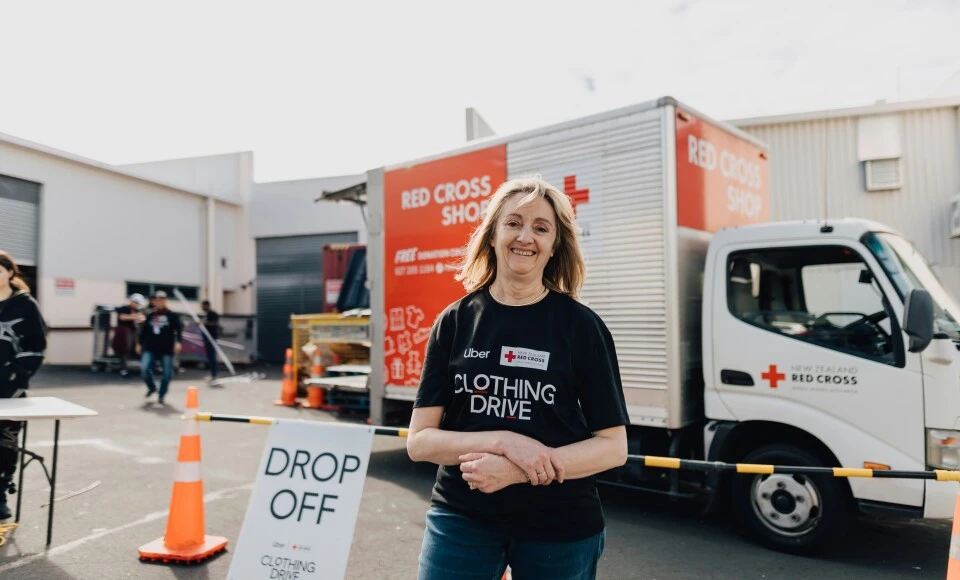
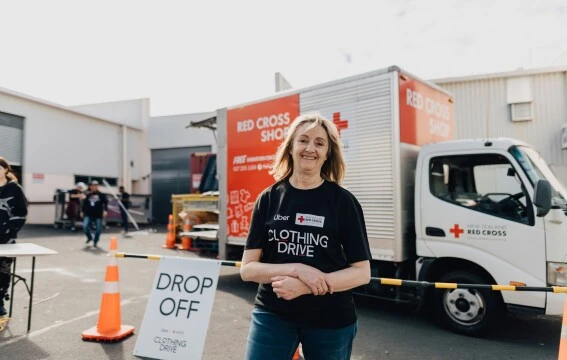
This year we’re celebrating 110 years of humanitarian service. For over a century, we’ve been a cornerstone of care and compassion, supporting communities through crises, emergencies, and moments of need. One of the ways we’ve done this is through our Red Cross Shops, which have been part of our income generation and volunteering opportunities since our inception.
Opportunity shops — later called op shops — were started by Salvation Army founder William Booth in late-19th-century Britain. He wanted a place where “wastage from the homes of the wealthy [was] turned into profitable account in the service of the poor and submerged”.
The first op shops in New Zealand opened in the late 1920s and ‘thrift shops’ were found in many parts of the Western world during the 1930s depression. The number of op shops grew after 1960, as more disposable wealth and a new era of consumerism meant a constant supply of stock to permanent shops.

Collected shoes at the Rotorua Red Cross depot for women whose husbands were unemployed, 1938.
The beginning of Red Cross Shops

Waikato centre packing room, 1942.
Our Red Cross Shops can be traced to our First World War beginnings, where volunteers collected goods to send overseas or sell to raise money. For many years we had depots where people donated clothing, bedding, and household items for sale in shops or to give to people in need. Before the mid-1970s we sent some clothing overseas and kept a certain amount as an emergency cache.
Fairs and jumble sales were also popular fundraising events for many Red Cross groups across the motu | country, with branches collecting items and saving them throughout the year. We still see this today with the legendary Palmerston North Book Sale, which happens each year on King’s Birthday Weekend.
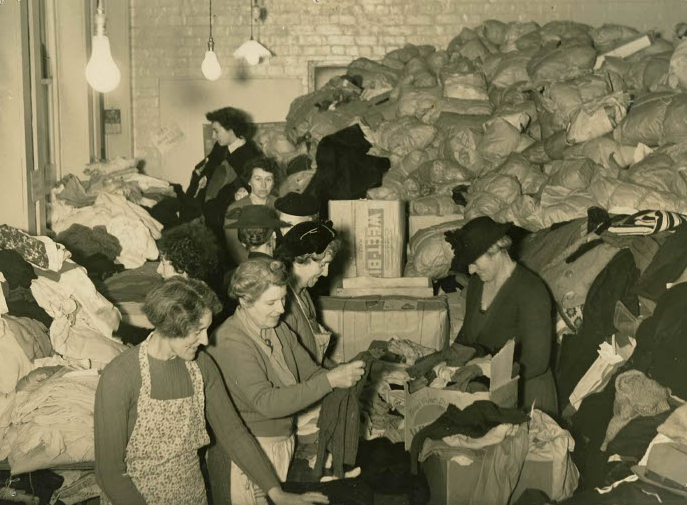
Red Cross volunteers sorting donated clothes in the late 1940s.
Community or business model?

Ponsonby shop volunteers in in the mid-1970s.
Our shops during the First World War were focused on raising huge amounts of money for the wider Movement during a time of great need. During the 1930s depression, our depots were places where low-income people got clothing for free or next to nothing.
Like much of our work, Red Cross Shops relied and continue to rely on volunteers. Throughout our history, from our wartime beginnings to now, a lot of this work has been done by women. Historians Kerryn Pollock and Bronwyn Labrum described pre-2000s op shop volunteers as “middle-aged, middle-class women who weren’t in paid work”.
Changing attitudes towards middle-class working women starting in the 1960s, as well as the 1970s Women’s Movement, led to more of these women joining, staying, or going back into the workforce. By the 2000s, there were fewer women not in paid work to run the shops, which contributed to Red Cross Shops — and op shops more broadly — becoming more businesslike. In 2008, we brought many shops under national management. This led to an increased focus on income generation, which enabled our community and honoured donors by selling donations at an appropriate price.
John Ware, our Secretary General from 2007 to 2013, said, “there’d been this tradition that donated clothing, you give away. I used to say to them ‘if we can make money through selling clothes, and by doing it in a different way, we can do an awful lot with the millions being made.’”
Op shops started in unused spaces connected to churches, charity building, depots, and other community spaces. Over time they moved into proper store fronts in suburbs and town centres.
Red Cross Shops today
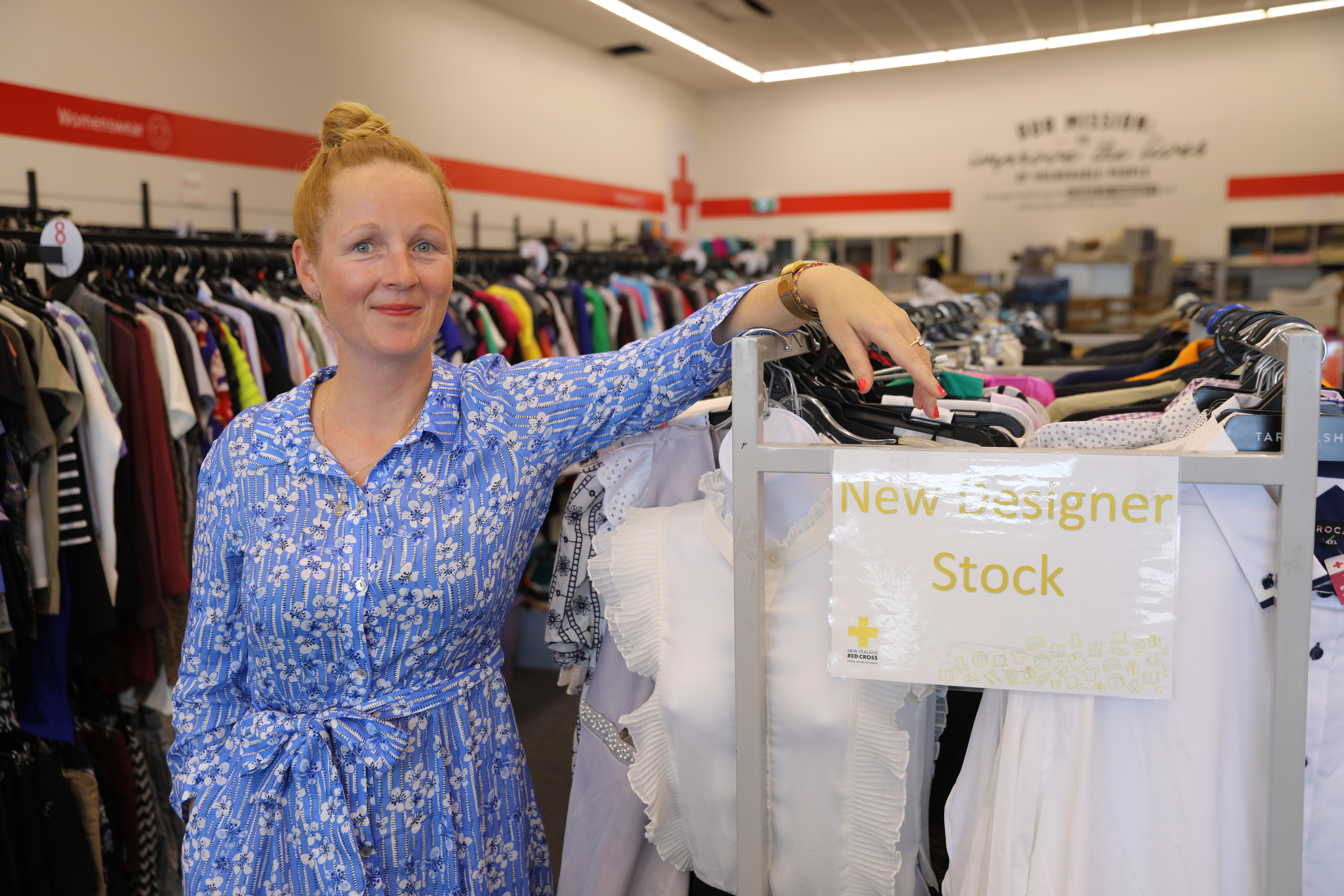
There is a wide range of clothing available at your local Red Cross Shop.
Today we have 39 nationally managed Red Cross Shops as well as 12 branch-led shops. In the last 20 years we’ve seen massive changes to the retail industry, with the dual explosions of e-commerce and fast fashion. Chain stores, as well as online outlets, offer shoppers affordable and accessible brand-new clothing, something that would be incomprehensible to our 19th and early 20th century forebears.
With the changes seen the wider retail industry, today Red Cross Shops provide an essential community service which wasn’t a focus in decades past – keeping goods out of landfill. Each year in New Zealand, Red Cross Shops divert more than two million items from landfill and put them back into the circular economy.
The shift to selling used items rather than giving them away also reflects how our personal and collective values have changed. The post-Second World War decades saw an increase in disposable wealth, with consumerism and value focused on new items after the deprivation of the depression and war years. In the last 20 years, we’ve seen a huge increase in recognising the value of second-hand goods, with people coming to our shops explicitly to find quality, used items.
Clothing, homewares, furniture, and other items which still have a life left in them are what Red Cross Shops are built on today. They’ve become places to find treasures and one-of-a-kind pieces that you can’t find anywhere else. Crucially, the millions of dollars brought in each year by our shops helps to fund our work both here and overseas.
We haven’t accepted donations of goods as part of an emergency response for several decades, so we encourage people to instead donate these items to our shops throughout the year. The clothing drives of the past are given a modern twist with our annual Uber x Red Cross Clothing Drive. For one day in October, people in Auckland, Wellington, and Christchurch can book a free Uber Package pick up to donate quality used clothes from their doorsteps. This sees around 50 tonnes of stock donated each year, which is then dispersed to nearly all our shops for sale, stocking them for months at a time.
Our volunteers have changed too, reflecting the diversity of Aotearoa New Zealand – young people wanting to develop job skills, new Kiwi wanting to improve their English, people with disabilities, retirees, as well as working women and other people who volunteer when they can. We have over 1200 volunteers in our Red Cross Shops — more than 30% of whom are under 30-years-old — being led by more than 40 shop managers as well as a small national team. Our shop managers have more than 500 years of retail experience combined, many with long careers in the retail industry and some owning their own businesses before joining Red Cross.
What hasn’t changed is the community, human connection, and a sense of purpose that our shops offer. They’re a place for volunteers to build friendships, confidence, skills, and self-esteem. Many of our shop managers and other employees started out as volunteers, learning the ropes and gaining skills which they’ve poured back into Red Cross.
Our shops and everyone who makes them run are united and guided by our Fundamental Principles – that no matter where, no matter when, Red Cross is always there.
Header image: Talei Kitchingman, our Director of Retail.
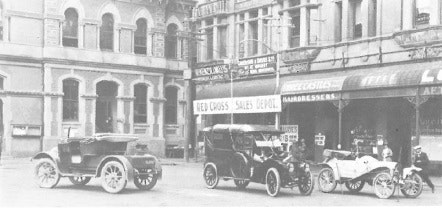
One of our first shops and depots, photo taken in the early 1920s.
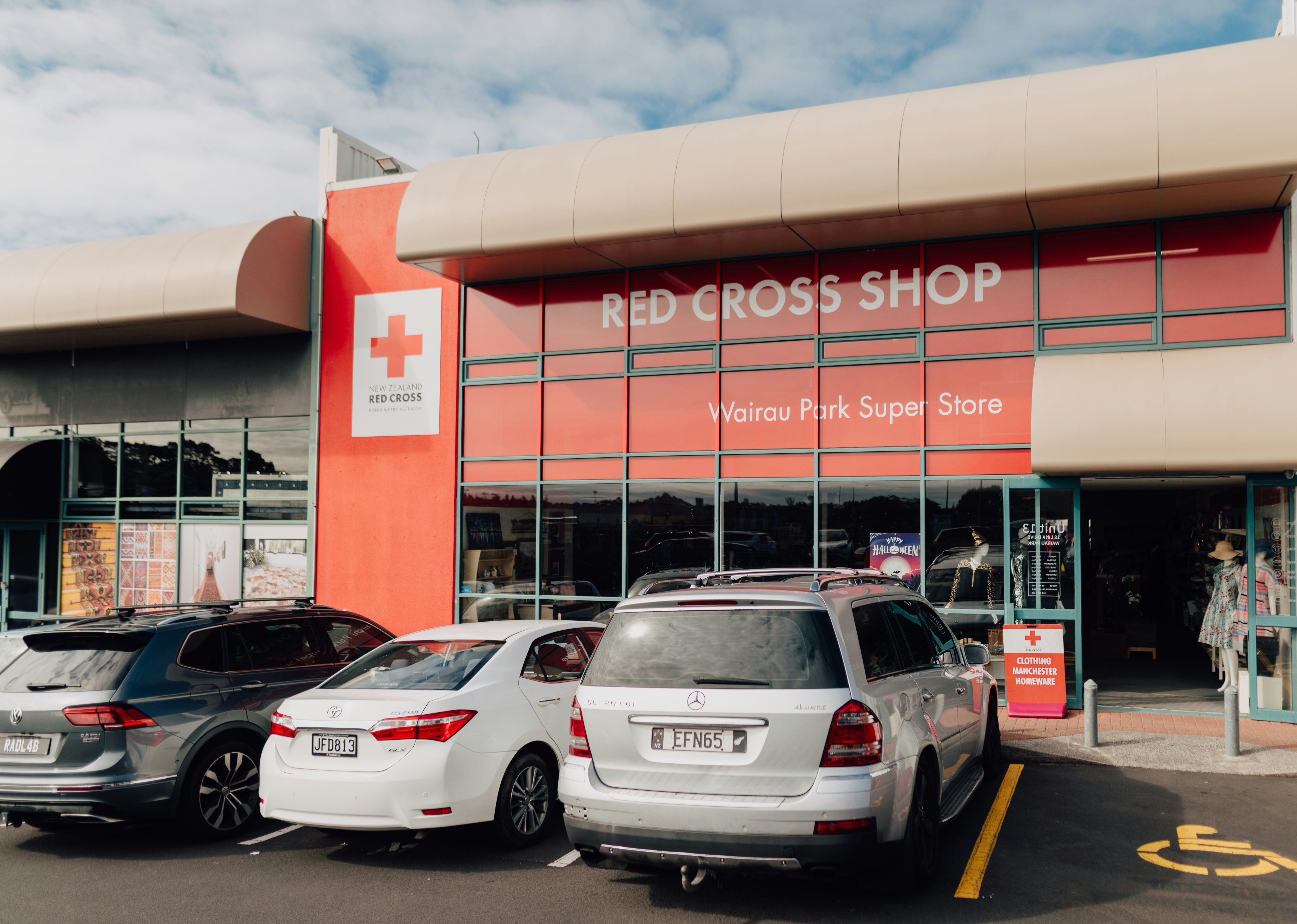
Our Wairau Park Superstore.
More information
- Join us in writing the next chapter – celebrate this milestone by getting involved! Volunteer at a Red Cross Shop and support our work helping communities both here and overseas.
Red Cross Shop volunteering information - Learn more about what we do in New Zealand.
Our work in New Zealand - In times of disasters, conflict, and other emergencies, we respond to the needs of vulnerable people around the world.
What we do overseas - Find out more about our Fundamental Principles and how they guide our work.
Our Fundamental Principles
This story was made possible thanks to the work of New Zealand historians:
- ‘Across the Street, Across the World: A History of the Red Cross in New Zealand 1915 – 2015’ by Margaret Tennant.
- ‘Second-hand trade’ TeAra.govt.nz – The Encyclopedia of New Zealand, by Bronwyn Labrum and Kerryn Pollock.
